|
|
|
May 23, 2024
Stay informed! Here?s a summary of upcoming wildlife and habitat management activities and ways you can discover, explore and experience Minnesota?s outdoors.
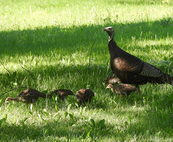
Share your pheasant and turkey sightings!
You can now report observations of ring-necked pheasants and wild turkeys through a citizen science effort by the Minnesota DNR.
Report any pheasant and turkeys you see in the wild from May through September. The DNR will use information from the reports to help monitor pheasant and turkey population trends, evaluate conservation efforts and make decisions about harvest regulations. People can report pheasants and turkeys of all ages. Also please note, the project is in addition to pre-existing pheasant and turkey research and monitoring efforts, and will not be used as the only determining factor for hunting regulations.
Using a mobile device or desktop computer, people can enter information on the Minnesota DNR website. The page will also include the opportunity to sign up for email updates that will be sent out when results are available from the reporting effort.
|
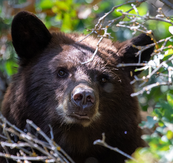
Be BearWise while recreating outdoors
Hikers, campers and others recreating outdoors: Please be aware of bears and learn how to prevent conflicts with bears. Black bears are naturally cautious animals that typically avoid human contact for their own safety; however, it?s important to be proactive to prevent human-bear conflicts.
The key things to remember are to not surprise them and to secure things bears view as food. When moving about in bear country, be aware of their surroundings, make noise periodically so bears know you?re there, and always keep dogs leashed. Letting dogs chase or bark at bears is asking for trouble. Don?t force a bear to defend itself. Keep your dogs leashed at all times or leave them at home.
To keep food away from bears, keep a clean camp by practicing leave no trace principles.
- Store coolers in a locked vehicle or store food in a certified bear-resistant container.
- Take food waste with you rather than piling it outside the receptacle if the trash container or dumpster is full. Don?t leave trash or food scraps in camp and don?t burn scraps in the fire ring.
- Do not leave food, trash or pet food outdoors and unsupervised ? all it takes is a few seconds for a hungry bear to swipe it.
- Do not store food, trash, clothes worn when cooking, or toiletries in tents or camping hammocks.
Learn more about how to safely recreate in Minnesota on the DNR website and at BearWise.
Photo courtesy of the National Park Service
|
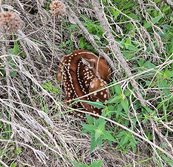
Spread the word: Leave deer fawns alone
The Minnesota DNR asks that people avoid disturbing or touching deer fawns, which are born around this time of year.
Most fawns are born in mid-May to mid-June, and fawns do not attempt to evade predators during their first few weeks of life. Instead, they remain still to avoid being seen. During these times, fawns are learning critical survival skills from their mothers but are often left on their own while their mothers forage watchfully nearby.
Be assured deer fawns are likely fine even if they look abandoned or fragile. Even if the fawn is known to be wounded or abandoned due to car strike or animal attack, do not transport it without talking to a wildlife rehabilitator. Moving a fawn can be detrimental to the animal and increase the risk of disease spread. For more information about what to do after finding fawns or other species of young wild animals, visit the DNR website.
|
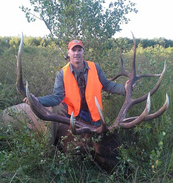
Apply to hunt elk in Minnesota
Hunters have through Saturday, June 15, to apply for one of the 10 elk licenses offered this year by the Minnesota DNR. Licenses offered this year include two landowner permits, two 10-year history permits, and six general lottery permits. All three seasons will be conducted from Saturday, Sept. 21, through Sunday, Sept. 29.?
The Minnesota DNR is committed to managing elk for specific population goals set in the most recent elk management plan. You may notice that there are fewer permits available than in past seasons. The reduction in harvestable elk by state hunters reflects our desire to move toward population goals while considering potential harvest by Red Lake Nation Band members. The reduction also accounts for uncertainty in elk numbers since lack of snow prevented DNR from conducting its aerial elk population survey in 2024.
Find important details about how to apply, maps and other hunting information on the DNR elk hunting page.
Brad Penas with his state record elk harvested in northwestern Minnesota
|
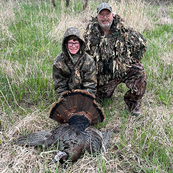
Turkey hunting continues through May 31
Firearms turkey hunters who have an unused tag from an earlier hunt period can participate in the final hunt period that started May 22 and continues through Friday, May 31. Hunters can also purchase a license for this time period. Archery-only and youth ages 17 and younger are allowed to hunt during any time period, including the final one. Hunters cannot purchase both a firearms and archery-only license. Turkey hunting details are available on the DNR website.
?First turkey, called in by his great uncle Pat? photo courtesy of Eric Janssen
|
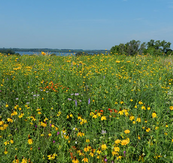
Comments welcome on Lac qui Parle WMA master plan update
The Minnesota DNR invites people interested in the Lac qui Parle Wildlife Management Area to share their thoughts on a draft update of the master plan for the popular hunting, fishing and wildlife-watching destination in southwestern Minnesota. The draft master plan update and details on how to comment is available on the Lac qui Parle page of the DNR website.
Lac qui Parle WMA?s 33,500 acres comprise the largest contiguous block of public land in west-central Minnesota and include a state game refuge, a wildlife sanctuary, a waterfowl feeding and resting area, a duck sanctuary and a controlled hunting zone. The WMA is popular destination for anglers, hunters, trappers, and bird and wildlife watchers alike.
|
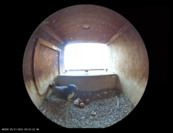
Falcon chick is on DNR FalconCam?
The first of four peregrine falcon eggs in the DNR FalconCam nest box has hatched and a chick is now visible. The popular webcam, live streaming from a nest box on a high rise in downtown St. Paul, will once again capture a peregrine falcon pair raising their chicks.
The two adult falcons using this nest box have been identified by the Midwest Peregrine Society as an 11-year-old female and a 15-year-old male. This female falcon has nested in this box since 2016. The male, banded as a chick in 2009 in Indiana, is a new partner for the female.??
The peregrine falcon story is a Minnesota success. In the 1970s, they were on the brink of extinction in North America. Populations were restored with the help of Minnesota falconers, the Midwest Peregrine Society and the DNR Nongame Wildlife Program. Donations from generous Minnesotans on income tax forms helped to fund the peregrine falcon restoration project and the DNR FalconCam.
|
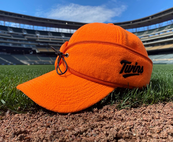
Minnesota Twins offer special edition hats with DNR ticket package
Anyone with a 2024 Minnesota fishing or hunting license can access a ticket package with the Minnesota Twins this season that includes a special edition blaze orange wool-blend Twins cap with a ticket purchase.
The Minnesota DNR Days partnership includes seven games this year, with the next one coming up Friday, May 24 vs. Texas Rangers. Find more game times and instructions for purchasing tickets on the Minnesota DNR Days webpage.
|
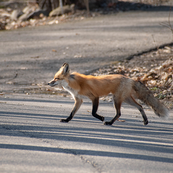
Wildlife highlight: Red fox
One of Minnesota?s most common predators is the red fox. Well-accustomed to life near people, red foxes are common across Minnesota including within the Twin Cities and suburban areas statewide. While they?re most active in the evening and at night, they will hunt during the day too. Foxes are opportunists and will eat a wide variety of small mammals, snakes, fish, birds, insects, nuts and berries. They will store uneaten food for later by burying it or hiding it under leaves. Red foxes can run up to 30 mph and can leap 15 feet in a single bound. Learn more about foxes on the DNR website.
Photo courtesy of Kirsten Engeseth, iNaturalist
|
|
|
|
|
Get hunting information
Hunters, trappers and wildlife watchers benefit from the management, habitat and oversight work of the Minnesota DNR?s area wildlife office staff. Have question, comment or concern? Area wildlife staff are happy to talk with you!
Find hunting and trapping regulations, harvest registration, how to contact a conservation officer and information about pursuing a variety of species at the DNR hunting page. New to hunting? Check out the DNR learn to hunt page.
|
|
|
|
